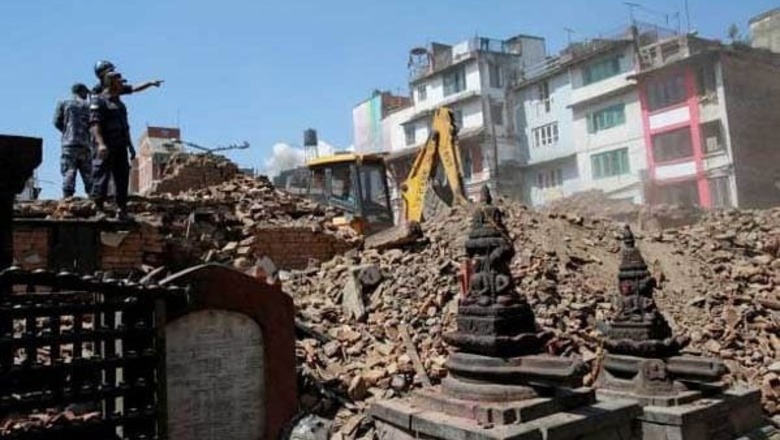
views
Kathmandu: What took moments to flatten will take years to rebuild. In mere seconds a powerful earthquake devastated a swathe of Nepal.
Rebuilding the impoverished Himalayan nation's fragile economy will require a long slog, financed by foreign aid and money from its army of overseas workers.
Initial estimates peg the economic damage from the temblor that killed more than 5,000 people at billions of dollars. The tourism industry, a pillar of the economy, has been shattered and it's unclear when the travellers will return.
"It's been devastating. Their tourism economy has obviously come to a halt," said Rajiv Biswas, Asia-Pacific economist with IHS. "I don't know when it would be realistic for tourists to again visit Nepal."
Biswas forecasts the cost of reconstruction could exceed USD 5 billion or about 20 per cent of Nepal's economy.
An initial estimate by the US Geological Service reckons damages of USD 1 billion to USD 10 billion.
Other analysts say it's far too early to assess the full cost. Tourism provides 7 per cent of Nepal's jobs and accounts for 8 per cent of the economy, according to the Asian Development Bank.
"I've had all my reservations cancelled. I have nil bookings left," said Hari Man Lama, of Incentive Tours, a travel company in Kathmandu.
"This disaster is going to bring a big loss to the travel industry and to the tens of thousands of people who depend on the tourists for their livelihood."
Last year nearly 800,000 people visited Nepal, home to eight of the world's 14 tallest peaks, including 8,848-meter (29,029-foot) Mount Everest, the world's highest.
The earthquake, which struck in the middle of the tourist high season, destroyed nearly half of the UNESCO World Heritage sites in Kathmandu and triggered avalanches on Everest that killed 19. It's the latest setback for the industry, which suffered two tragedies in 2014.
Travellers are cancelling trips as governments issue advisories to stay away. Those still in the country are scrambling to get home.
"Tourists are fleeing because of the continuing aftershocks, which have brought fear and terror," said Lama.
"There's fear of the spread of disease because of the dead bodies that are still unburied and the lack of water and supplies."
Last April, the climbing season was cut short when 16 Sherpa guides were killed by an avalanche on Everest. In October, nearly four dozen foreign trekkers, guides and villagers were killed by snow storms and avalanches that swept the Annapurna region.


















Comments
0 comment